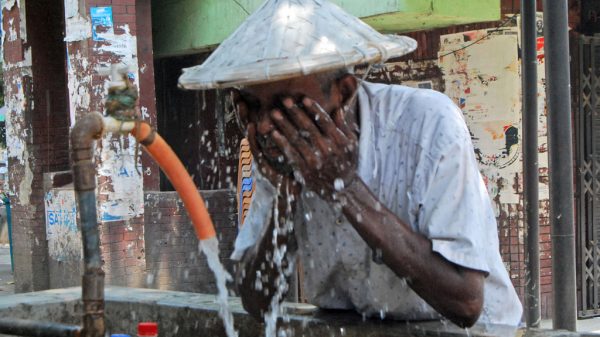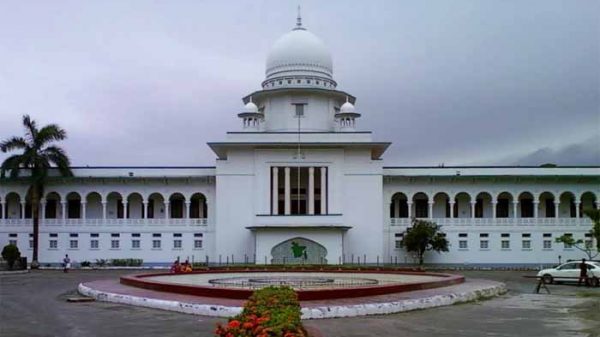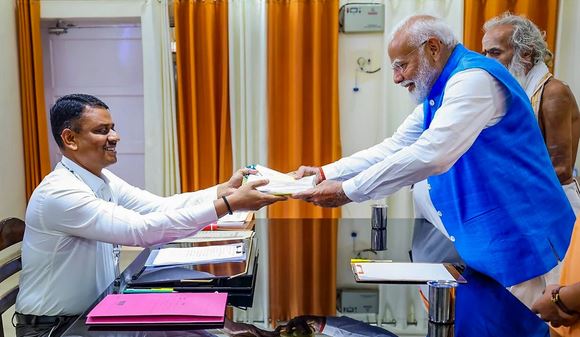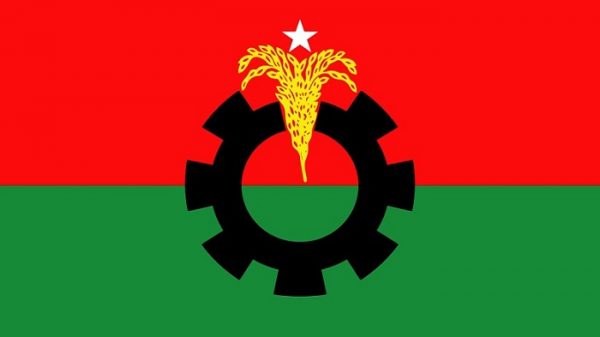Power cuts rise as heatwave peaks

Shawdesh desk:
The suffering of people reached a new height on Sunday as load shedding officially exceeded 1,800MW, the highest so far this year, with the longest-ever heat spell in the country’s history peaking.
At least 14 districts, the largest area affected by severe and very severe heat conditions since the longest ever heatwave began 29 days ago, saw their day temperatures rise to 40C or above on the day.
On the worst day of the historical heatwave, Bangladesh’s power generation nosedived because India lessened its electricity export and private power producers reduced their generation as the Bangladesh Power Development Board has yet to clear the pile-up of outstanding bills.
PDB member Khandaker Mokammel Hossain confirmed that the surge in the load shedding was partly triggered by India cutting down its power export and fuel-oil-based power plants reducing their operations over unpaid bills.
‘Some gas-based power plants going on with their maintenance work also contributed to the power crisis,’ he said.
The generation from gas, oil and coal dropped significantly given that they generated over 7,700MW, 3,000MW, and 4,000MW at certain hours recently. The import of power from India through Bheramara also dropped to about 600MW from 900MW at certain hours.
The hourly power generation data released by the Power Grid Company of Bangladesh revealed that load shedding kept worsening on Sunday as it peaked at 1,864MW with 13,398MW generated against a demand of 15,350MW.
This was the last data the PGCB updated on Sunday until 8:00pm. The load shedding remained around 1,500MW since 1:00am on Sunday, the worst power shortage recorded so far this year. Bangladesh has an installed capacity of over 27,000MW.
Just 24 hours back, at 12:00 noon on Saturday, the load shedding was 694MW.
The PGCB data showed that power generation from furnace oil, coal and gas dropped significantly.
With a capacity of 6,035MW, furnace-oil-based power plants generated only 1,543MW while coal-fired power plants with a capacity of 5,108MW produced only 3,266MW at the highest load shedding hour.
Gas-based power plants, on the other hand, generated 7,061MW against its capacity to produce 11,880MW, showed the PGCB data.
A PDB high official said that piled-up outstanding bills prompted private producers and Indian producers to turn a deaf ear to their repeated requests of not reducing power generation.
Power import from India dropped to 731MW at 1:00am on Sunday against the capacity of 1,100MW. The load shedding at the first hour of the day was 1,789MW.
An analysis of the PGCB data showed that the private power producers and India have been fluctuating their generation in a pattern over the last couple of days.
The PDB officials refused to reveal the amount of money the government owed to the private generators and Indian producers.
In March, PDB’s total outstanding bills to the power producers reached Tk 59,507 crore, according to newspaper reports. The PDB requested the government in March to immediately release Tk 3,000 crore to partially pay the outstanding from import of electricity and coal to limit power shortage during the summer peak.
When contacted for a comment about unpaid bills, Bangladesh Independent Power Producers Association president Faisal Khan asked for sending written questions which, when sent, he did not reply.
Tk 1,00,000 crore in capacity charge has been paid to privately-owned idle power plants in 14 years since the incumbent government assumed power in 2009. The capacity charge paid to the private power plants represented a part of the PDB’s predatory expenses that was passed onto the shoulders of consumers.
The plight of the people, who saw their electricity bills inflate by 300 per cent since 2009 caused by a six-fold increase in fossil-fuel-based power expansion, highlights how ruinous power planning could be for a nation, contributing to a large extent to the current dollar crisis, experts said.
The Power Grid Company of Bangladesh’s daily power generation report released on Sunday showed that at least 37 power plants remained partially or fully idle due to fuel shortage, which energy experts said is a direct manifestation of the dollar crisis haunting Bangladesh for more than two years.
The country’s power generation is largely-based on foreign reserve draining fuel import. Bangladesh spent Tk 1,072 crore in importing liquefied natural gas alone since 2018. Studies showed imported LNG was 24 times costlier than local gas.
Frequent power cuts, lasting up to 10 hours in phases a day, kept haunting people across the country, especially in rural areas.
Power cuts surged in the capital as well, mostly where the poor live in sprawling slums or cramped housing conditions, without access to adequate water and electricity.
Dhaka’s maximum day temperature on Sunday was 39C. The actual feeling, however, is far more when humidity factors in. Some studies found the capital to be 5C hotter than official account. A Washington-based non-governmental organisation, Adrienne Arsht-Rockefeller Foundation Resilience Center, revealed in a study that temperatures on road surfaces in Dhaka could reach up to 60C.
While people in the capital need power more than anytime in year to escape punishing heat, farmers need electricity to irrigate rice fields left parched and cracked by the combined effect of heat and drought.
Children fell sick in large number after educational institutions reopened after a week of suspension of in-person classes.
‘This is exactly what happens when you care the least about people while planning,’ said Hasan Mehedi, member secretary, Bangladesh Working Group on Ecology and Development, a platform of green activists.
On Sunday, Bangladesh’s highest day temperature of 42.2C was recorded in Jashore.
Bangladesh Meteorological Department said that a very severe heatwave is also sweeping through Rajshahi district while a severe heatwave is sweeping through the rest part of Khulna division and the districts of Tangail, Faridpur, Gopalgonj, Naogaon, Pabna and Nilphamari.
A mild to moderate heat wave is sweeping through Barishal division and the rest part of Dhaka, Rajshahi and Rangpur and the districts of Mymensingh, Moulvibazar, Rangamati, Chandpur, Noakhali, Feni and Bandarban.
The BMD issued a heat alert for three more days on April 28.
The death toll from heatstroke climbed to seven after a 54-year-old man, Nurul Alam, died in his home in Bandarban, the Directorate General of Health Services confirmed. The DGHS began reporting heatstroke on April 22, far later the media started reporting heatstroke deaths in the heatwave.
New Age correspondent in Rangpur reported that power cuts lasted up to four hours a day in Rangpur city while 10 hours in rural areas.
‘We plead for electricity not for our physical comfort. We need electricity for our rice fields, growing food for all,’ said Alam Miah, a farmer of Rangpur’s Mithapukur.























Leave a Reply